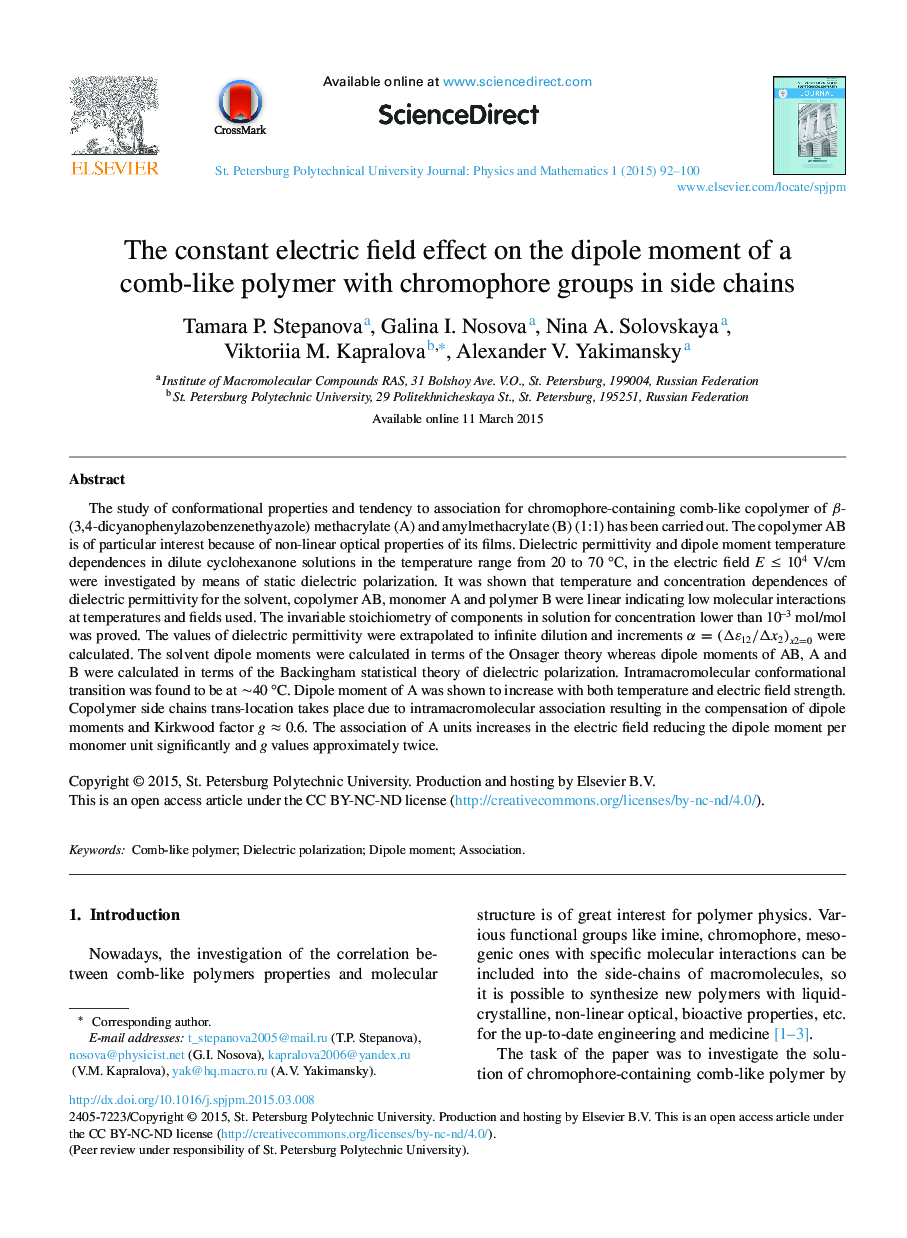| Article ID | Journal | Published Year | Pages | File Type |
|---|---|---|---|---|
| 1785314 | St. Petersburg Polytechnical University Journal: Physics and Mathematics | 2015 | 9 Pages |
The study of conformational properties and tendency to association for chromophore-containing comb-like copolymer of β-(3,4-dicyanophenylazobenzenethyazole) methacrylate (A) and amylmethacrylate (B) (1:1) has been carried out. The copolymer AB is of particular interest because of non-linear optical properties of its films. Dielectric permittivity and dipole moment temperature dependences in dilute cyclohexanone solutions in the temperature range from 20 to 70 °С, in the electric field E ≤ 104 V/cm were investigated by means of static dielectric polarization. It was shown that temperature and concentration dependences of dielectric permittivity for the solvent, copolymer AB, monomer A and polymer B were linear indicating low molecular interactions at temperatures and fields used. The invariable stoichiometry of components in solution for concentration lower than 10–3 mol/mol was proved. The values of dielectric permittivity were extrapolated to infinite dilution and increments α=(Δɛ12/Δx2)x2=0α=(Δɛ12/Δx2)x2=0 were calculated. The solvent dipole moments were calculated in terms of the Onsager theory whereas dipole moments of AB, A and B were calculated in terms of the Backingham statistical theory of dielectric polarization. Intramacromolecular conformational transition was found to be at ∼40 °C. Dipole moment of A was shown to increase with both temperature and electric field strength. Copolymer side chains trans-location takes place due to intramacromolecular association resulting in the compensation of dipole moments and Kirkwood factor g ≈ 0.6. The association of A units increases in the electric field reducing the dipole moment per monomer unit significantly and g values approximately twice.
